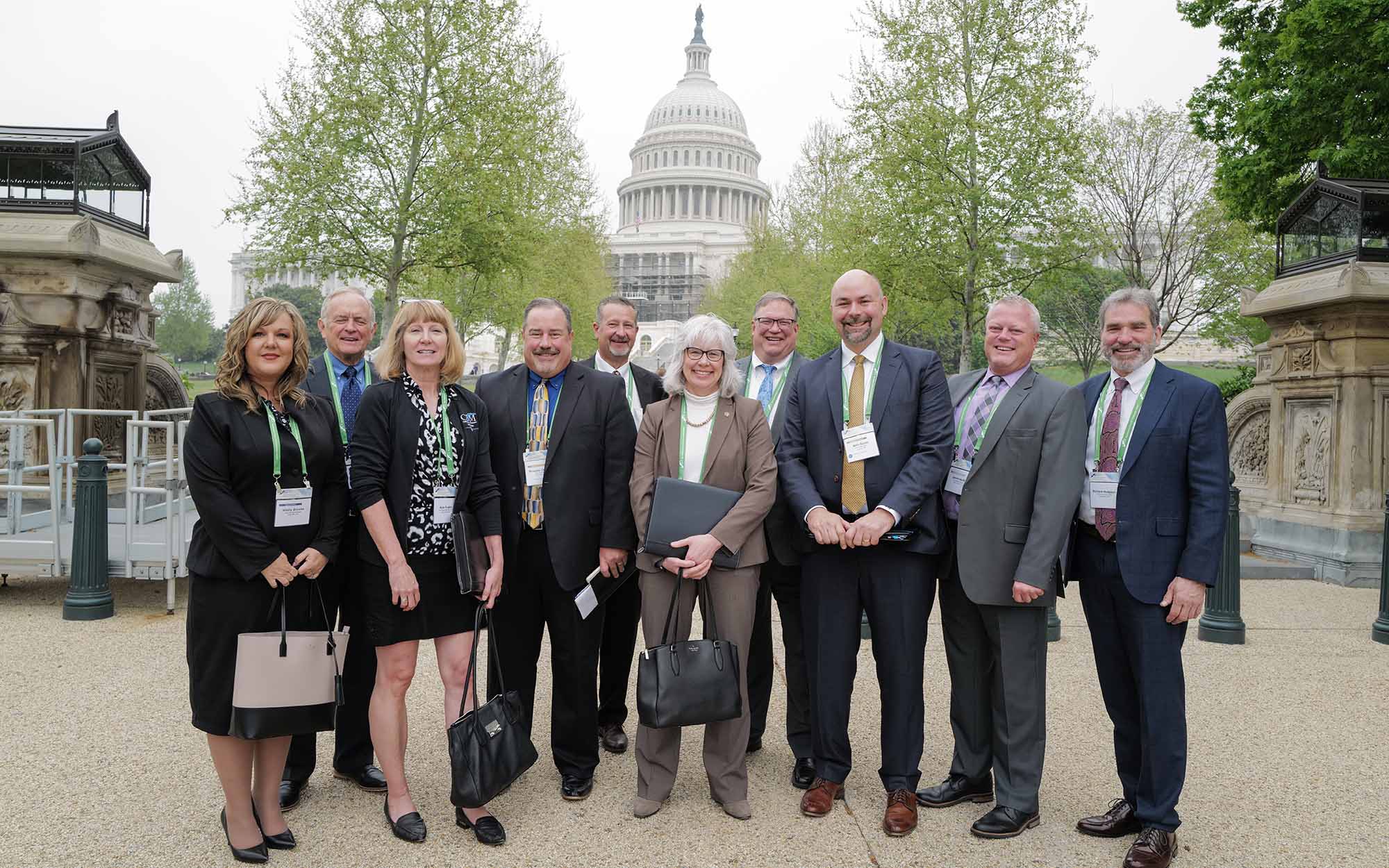1. Look to technology for efficiencies
Community banks often say they are too busy to look at process improvement when business is good. But as volume starts to decrease, it becomes even more important, so that when volume picks back up, you can handle the same volume or more with fewer or the same number of people, says Lynn A. David, president of Community Bank Consulting Services, Inc., which has locations in St. Louis, Mo., and Park City, Utah. Generally, about 50% of a bank’s processes can be automated over time, he says, meaning that “you’re finding ways to work better, faster and smarter.”
Efficiencies can sometimes be found by taking a closer look at the capabilities that existing software may offer. Community banks should also do a deep dive into newer technology that may be able to help with automation efforts. “The level of commercially available technology is much better than it ever has been in the past and is coming at a more economical price level,” says John Epperson, managing principal of financial services at Crowe LLP.
Community banks should look for other areas where small changes can make a meaningful difference. Shifting to e-notices is one example. Many community banks readily use e-statements, but they haven’t been as proactive about automating notices, at least for most customers, David says. He adds that making that change can reduce costs and increase productivity.
To help identify inefficiencies, $2 billion-asset Sunrise Banks in St. Paul, Minn., established an automation efficiency group in May 2021 of about 30 bank employees. The group includes staff from sales, IT, operations and compliance, as well as high-level bank executives. They meet twice a month and accept requests and suggestions designed to reduce pain points and improve automation and efficiency, says Bryan Toft, the community bank’s chief revenue officer. To date, more than 50 requests have been submitted, with 18 completed or canceled.
2. Review expenses
Every year, Grand Rapids State Bank, a $270 million-asset bank in Grand Rapids, Minn., does a top-to-bottom review of its expenses. “You still have to spend money to make money,” says Jeff Lee, senior vice president and chief credit officer. He notes, however, that there may be free or lower-cost products that work equally well.
He offers the Expected Losses Estimator (ELE) as a real-life example of a free product the Federal Reserve released to help banks comply with the Current Expected Credit Losses (CECL) standard. Grand Rapids State Bank tested the product and found it was equal to, if not better than, what was commercially available. “Why would we spend money on a third party when the Federal Reserve has a very nice product that we can use for free?” Lee says.
Community banks should also make sure they are not overpaying for third-party services. This includes core, digital banking and payment processing services. They should look at their contracts carefully, especially if they haven’t been negotiated in the last three to five years, says Eric Weikart, partner and leader of strategy and execution solution group at Cornerstone Advisors in Scottsdale, Ariz. Letting contracts auto-renew is a practice he strongly advises against, as banks that do this are likely “leaving money on the table.”
It’s also a good time for community banks to consider their staffing expenses. For example, there may be ways to automate certain tasks and use existing staff more efficiently. To curb costs, community banks could also consider hiring more remote workers, a trend that’s become more common due to the pandemic, Epperson says.
3. Double down on credit quality
In uncertain times, it’s critical for banks to focus on credit quality and monitor their loan portfolio, Toft says. This involves making sure annual reviews are up to date and that the community bank is getting all the financial information it needs from loan customers. It could also mean finding creative ways to prod customers to provide this information if they haven’t already, he says.
Toft also recommends community banks monitor real-estate tax payments for their commercial loan clients, since it’s more common for borrowers to make these payments on their own. Sunrise Banks checks the county’s website twice a year to make sure property taxes are being paid in a timely manner. If not, it could be an indicator of upcoming problems with cash flow which could affect loan payments, even if they have been made up until that point, he says.
David notes that banks don’t always afford the same degree of due diligence to their $100,000 loans as they do to $500,000 loans, which he believes is shortsighted. The amount of revenue generation necessary to offset smaller charge-offs is an important consideration, and community banks need to hold loan officers accountable for smaller loans as well, making sure they are adequately secured, he says.
4. Seek to boost noninterest income
On the revenue side, it’s important to find ways to increase noninterest income. This is particularly true now, as banks lose overdraft fee income due to regulatory and market-driven changes.
Banks make, on average, about $150 per checking account per year, according to Cornerstone’s Weikart. Eighty percent of this comes from overdraft protection and interchange fees on debit. To replace non-sufficient funds, community banks might consider making a concerted effort to open more checking accounts. That could include doubling down on marketing, making product changes, and switching to or increasing their digital focus to attract younger customers, Weikart says.
Banks could also seek to boost their treasury management service offerings, says Marcia Malzahn, president of Malzahn Strategic, a management consulting firm in Maple Grove, Minn.
5. Control fraud losses
Software to help community banks curb fraud losses is becoming more and more refined, David says. But it’s not helping anyone if banks don’t stay on the “cutting edge of the fraud software,” he adds.
Having up-to-date software can be especially important since there’s a fine line between fraud control and making things too onerous for customers, such as when they receive constant fraud alerts. Community banks should expect debit fraud losses to be about 3.5 basis points of purchase volume, according to an analysis by Cornerstone Advisors. If it’s higher than that, banks should reconsider their policies and procedures, Weikart says.
6. Diversify revenue streams
Community banks need to consider what other things they can provide to customers that encourage them to stay with the bank and drive future revenue, Epperson says. Maybe it’s integrated technology that allows customers to monitor their aging parent’s finances, or it might be analytics that help small businesses better manage their finances. “These types of unique, value-added offerings make it more likely that customers won’t bolt just for a higher interest rate,” he says.
There are a lot of low-margin businesses out there. While it may be low-hanging fruit, just realize what the overall return is before jumping in.”
—Eric Weikart, Cornerstone Advisors
There may also be ways to diversify within existing business lines. Within lending, for instance, some community banks are highly focused on SBA loans, but if that particular niche drops off precipitously, it becomes a liability. “It’s great to have expertise, but you also want to have expertise in multiple areas so that you don’t put all your eggs in one basket,” Malzahn says.
Grand Rapids State Bank found a way to further diversify its lending revenue in early 2022 by introducing personal lines of credit for individuals. The move was initially based on a customer request, but after investigating the potential, it seemed like a good opportunity to make recurring revenue, Lee says. He notes that the bank has created a few dozen new lines since February 2022.
Before leaping into a new area, however, community banks need to make sure they understand the profitability potential, Weikart says. It can be tough to move the needle in areas like wealth management, for example, where the margin is low. “There are a lot of low-margin businesses out there,” he says. “While it may be low-hanging fruit, just realize what the overall return is before jumping in.”
Also be mindful of taking on too much risk. Trying new things in deposits or treasury management—where the risk isn’t as great—could be advisable. But during times of economic uncertainty, community banks might want to avoid taking on undue risks in areas they don’t have experience in, Toft says. It would be unwise, for instance, for a community bank that doesn’t currently focus on construction lending to start making speculative new construction loans, he says.
[Data mining] is much, much, much, more cost-effective than spending tens and hundreds of thousands of dollars on new customer acquisitions.”
—Lynn A. David, Community Bank Consulting Services, Inc.
7. Enhance cross-selling efforts
It costs significantly more to onboard a new customer than it does to cross-sell an existing customer, says David of Community Bank Consulting Services, Inc. Community banks need to consider what new products and services the consumer is likely to be interested in. If a customer has a checking account and a savings account with the bank, a credit card may be the next most logical service to offer, he says. Or, if a customer has only a checking account, but is nearing the age of 21, it might be a good opportunity for the community bank to offer the customer auto loan financing. When the client gets closer to age 25, a mortgage solicitation might prove fruitful.
Effective cross-selling requires data mining, which not all community banks are making the most of. “They know they should be doing it, but many of them are not doing it,” says David. “This is much, much, much, more cost-effective than spending tens and hundreds of thousands of dollars on new customer acquisitions.”
This is where technology is critical, because it can predict the types of products and services that customers may be more willing to purchase or engage with, Epperson says. “Investing in these types of technologies that deliver better insights can be a worthwhile investment to help manage inflationary and recessionary pressures that we’re seeing today.”
Be mindful of fees
As much as community banks want and need opportunities to bring in noninterest income, they have to be careful to weigh this against customer needs. “You can’t punish the customer because of economic times,” says Jeff Lee, senior vice president and chief credit officer at Grand Rapids State Bank in Grand Rapids, Minn. “We’re there to help them, not to hurt them.”
He offers the example of the Great Recession in 2008 and 2009, when many customers were struggling financially. At that time, when banks renewed customers for loans or priced new loans, they had to treat customers with white gloves to avoid placing undo economic pressure on them. If the customer wouldn’t qualify for a conventional mortgage, for example, the bank might have offered a balloon mortgage with a 20-year amortization.
The same is true today, where banks have to make sure products continue to fit customers’ needs. “They might be qualified for a different product that’s more advantageous for them and doesn’t hurt the bank either,” Lee says.
The case for treasury management
Community banks typically don’t offer robust treasury management services, also known as cash management services, that bigger companies need, according to Marcia Malzahn, president of Malzahn Strategic, a management consulting firm in Maple Grove, Minn. These services include ACH origination, remote deposit capture, Positive Pay, Reverse Positive Pay and lockbox services, where the bank functions as a company’s accounts receivable department. Other services can include account analysis for treasury management, a reporting tool many businesses like, she says.
Many banks that do offer these services make the tactical and costly mistake of giving them away for free, she says. Her analysis showed that one community bank was losing out on yearly revenue of $1 million by not charging for treasury management. There’s a psychology to it as well. Companies expect to pay for treasury management, so there’s a danger they’ll view a bank’s services as sub par if offered for free, she says.
“Develop and enhance your treasury management services so you can attract larger businesses that will bring to your bank larger loans, more core deposits and more noninterest income,” Malzahn says.






